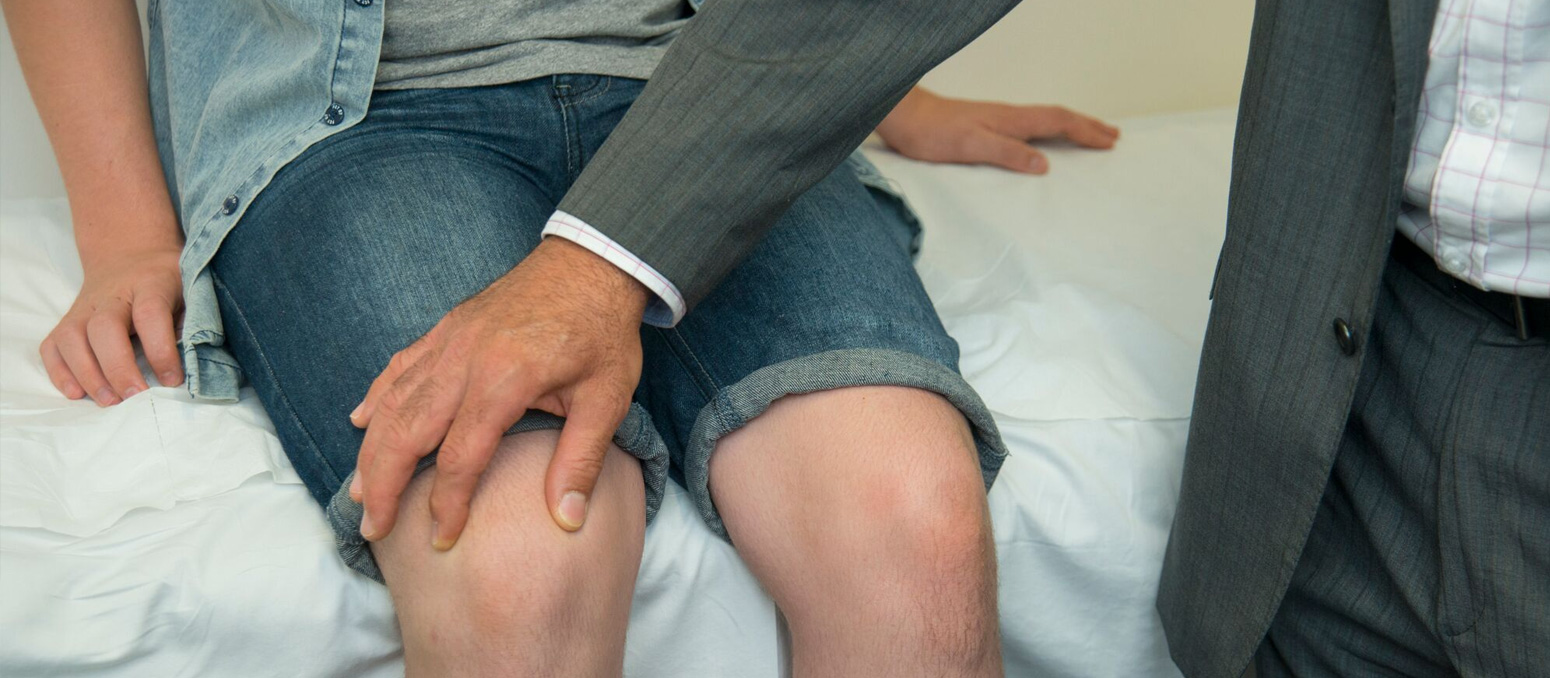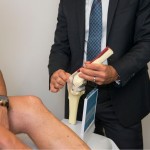Orthopaedic Conditions / Knee / Adults
Knee Arthroscopy Treatment

Knee arthroscopy is a common procedure that Orthopaedic surgeons use to examine, diagnose and treat a number of conditions within the knee joint.
An arthroscopy is a thin fibre optic telescope about the width of a pencil is passed into the knee joint through a small incision. A second portal or small incision is made for the instruments to be passed to allow the surgery to be performed (Key hole surgery). The small incisions allow fast healing and lower the risks of complications.
The knee joint consists of the distal end of the femur and the proximal end of the tibia which is covered with smooth articular cartilage and two moon shaped discs. There are 2 very important ligaments within the knee joint called the cruciate ligaments. There is also articulation between the back of the patella and the femur. The meniscus acts as shock absorbers they are mobile and help stabilise the knee. The smooth articular cartilage allows weight bearing and gliding of the joint as it goes through range of motion. The knee can be easily injured during sports or work activities. Twisting, pivoting, sudden stopping and changing direction or collisions can often cause injury to these structures. Common signs and symptoms of an injured knee include, swelling, persistent pain, catching or locking and giving way unexpectedly. A combination of physical examination by the surgeon and investigations such as MRI are often indicated to diagnose the problem before an arthroscopy is offered.
There are a number of procedures and conditions that can be treated with arthroscopy of the knee as well as being a diagnostic tool. Reconstruction of cruciate ligaments, repairs of the meniscus if possible. If repair is not possible then resection of the meniscal cartilage to a stable margin is often indicated to relieve the symptoms of catching and clicking. Treatment of the articular surfaces which have been damaged through a micro fracture and chondroplasty. Arthroscopy can also be used to washout an inflamed or infected knee.
Arthroscopy is a day procedure and the patient mobilises weight bear as tolerated and walks around that day. Physiotherapy and range of motion exercises can commence immediately. The quadriceps muscle which is in front of the knee is the prime mover and it is important in rehabilitating this muscle during the recovery phase. Patients usually regain range of motion and are walking normally after 1 to 2 weeks. Patients may be allowed to drive up to 24 hours following the surgery.
In summary key hole or arthroscopic surgery of the knee is a common procedure used to treat a number of conditions affecting structures within the knee joint. It is a minimally invasive procedure that allows early recovery and mobility.



